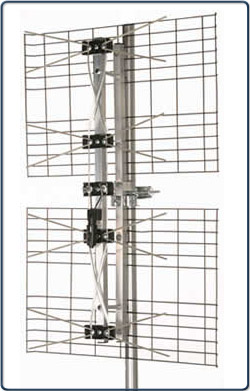HD, HDTV and High Def, what do I need to understand about these terms mean when I am looking to purchase a TV?
Unfortunately asking for help at a local electronics super store only confuses the issue as they explain things in technical language that you may not understand either.
So lets try to explain things in a simple manner so that anyone can understand it. This way you won't either over spend -- or not get what you are hoping for, while shopping for your next TV set.
So Lets Start At The Beginning...What Exactly Is HDTV?
Simply put, HD stands for High Definition. It describes the quality of the broadcast signal as well as the quality of the picture on your television screen.
Did You Know That There Are Different Levels Of HD Quality Available Today?
As of right now the 3 levels of HD available depending on the TV you buy are:
A) 720p
B) 1080i
c) 1080p
You Are Probably Wondering What Do These Numbers Mean?
The numbers correspond to the lines of resolution on your TV screen. First lets discuss a standard TV, which only shows a 480i picture. This means there are 640 vertical pixels x 480 horizontal pixels that make up your televisions picture.
It only makes sense then that the more pixels or lines of resolution you have…the better your picture quality is going to be.
Are you following me so far?
So Then How Many Pixels Does An HD Plasma or LCD Have?
As discussed befor, there are different grades of HDTV broadcasting available.
A) 720 p has 720 vertical pixels and 1,280 horizontal pixels
B) Both 1080i and 1080p have a resolution of 1,920 vertical pixels x 1,080 horizontal pixels
It only makes sense then that a 720p has a better picture than a typical 480 TV, and a 1080i TV or 1080p TV has a clearer picture than a 720p plasma tv.
Does that make sense?
So What Does The "p" And The "i" Represent?
The "p" or the "i" refers to how the picture is refreshed on your tv screen. The "p" stands for "progressive", while the "i" stands for "interlaced".
Now what does this mean?
Imagine taking a paintbrush covering your entire TV screen with one stroke. That's what happens with a "Progressive" broadcast signal. When you have a 720p or 1080p television all 720 or 1080 lines of resolution are refreshed on your TV at the same time.
On the other hand when it comes to a 1080i or "interlaced" TV, you would take that same paintbrush and just pain in every other line. First all of the even lines of resolution are pained in. Then 1/30 of a second later all of the odd lines are painted in, etc, etc.
Can you see how a 1080p picture would provide a crisper picture then a 1080i?
But there is something you need to know before spending the extra money on a 1080p… All cable and satellite channels are currently broadcasted in 1080i picture. That's right…even if you had a 1080p TV-It would offer no better picture then a 1080i.
When Might You Consider Buying A 1080P
A) You are the type that MUST HAVE the latest and greatest technology
B) You are willing to wait for the cable companies to start broadcasting in a 1080p signal
C) You own or are planning to spend $1000 to buy a Blueray or HD DVD player since they are the only equipment that can produce a 1080p signal that you can see on a 1080p TV.
My suggestions:
If you have never had an HDTV before...anything you get will be an unbelievable difference in your movie experience. If your budget can only afford a 720p-- then go for it. You will absolutely just love the improvement over your old 480i!
If you can afford to spend a few dollars more then go with the 1080i television, you will not regret it.
Learn how to contact an Atlanta Home Theater Automation Consultant
Visit his Home Theater Blog for helpful tips in easy to understand english.
Learn about HD programming with Direct tv Atlanta
Article Source: http://EzineArticles.com/?expert=Frank_Cheshire
HDTV In An Easy To Understand Way
Labels: hdtv, high definition, television, tv
